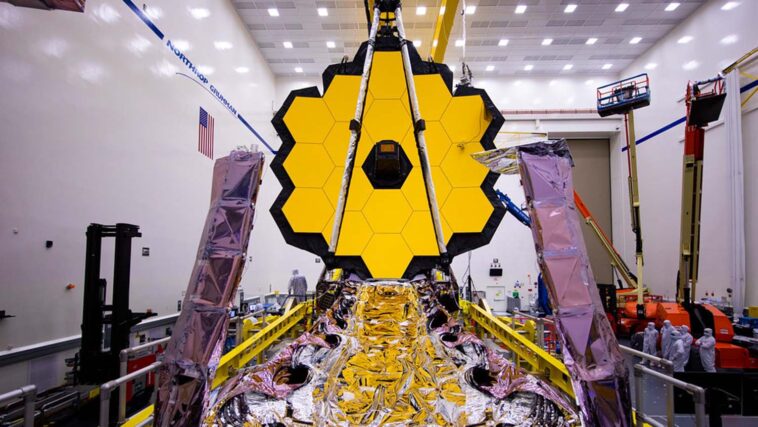The dawn of a new era in astronomy has begun as the world gets its first look at the full capabilities of NASA’s James Webb Space Telescope, a partnership with ESA (European Space Agency) and CSA (Canadian Space Agency).
The $10,000,000,0000 telescope that NASA launched on Christmas Day 2021 has returned its first full-color images, and they are incredible.
This is the first time in recorded human history that we have seen this far into the past and the new discoveries we will make based on these images are incalculable.
1. Cosmic Cliffs, Glittering Landscape Of Star Birth

NASA describes this photo as mountains and valleys speckled with glittering stars. It is actually the edge of a nearby (millions of lightyears away), young, star-forming region called NGC 3324 in the Carina Nebula.
2. Dying Star’s Final ‘Performance’ In Fine Detail

NASA’s James Webb Space Telescope has revealed details of the Southern Ring planetary nebula that were previously unseen. This has led to a new understanding of planetary nebulae which are shells of gas and dust ejected from dying stars.
3. The Galaxies Evolution, Black Holes

The new image of the galaxy group “Stephan’s Quintet” is 40 million lightyears away from Earth. This image is made up of almost 1,000 separate images and contains over 150 million pixels showing in rare detail how interacting galaxies trigger star formation in each other and how gas in galaxies is being disturbed. The image also shows outflows driven by a black hole in Stephan’s Quintet in a level of detail never seen before.
4. The Deepest Infrared Image of Universe Yet

This image when was originally approximately the size of a grain of sand held at arm’s length, a tiny sliver of the vast universe.
The combined mass of this galaxy cluster acts as a gravitational lens, magnifying more distant galaxies, including some seen when the universe was less than a billion years old. Its a composite made from images at different wavelengths, totaling 12.5 hours – achieving depths at infrared wavelengths beyond the Hubble Space Telescope’s deepest fields, which took weeks. Researchers will continue to use Webb to take longer exposures, revealing more of our vast universe.
Among the results, it proves that one of the galaxies has a mirror image. Could it be a multiverse?
5.

This image just puts into perspective how incredible the images and how deep into space the Webb Telescope is looking. When you see two lightyears as a dash and see detailed images of our universe we hope it inspires us to continue to explore and search for new answers to age-old questions.






